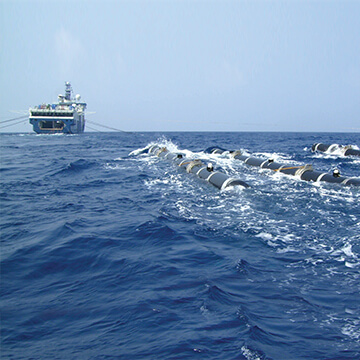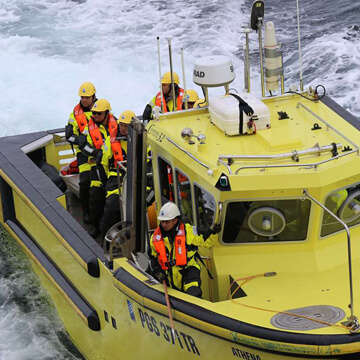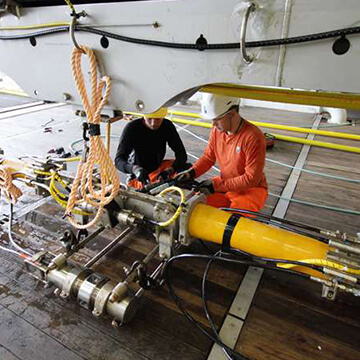Sustainability
The energy geoscience industry takes a great deal of care and consideration of potential impacts to the land and marine environments. In honoring its commitment to operate in an environmentally responsible manner, the industry implements measures to ensure that land and marine animals are further protected from any potential direct or indirect harm from its operations. For more than 50 years, the industry has demonstrated its ability to operate geophysical exploration activities in a manner that protects land and marine life and the environments in which they live.

EnerGeo Alliance members are committed to serving as a catalyst for achieving the highest standards of environmental stewardship throughout the energy geoscience industry. We are solidly committed to the responsible use and protection of land and marine environments and our animal neighbors that inhabit them.
Irene Waage Basili
CEO
Shearwater GeoServices
Land Environment
In the early days of exploration, deciding where to drill for petroleum and natural gas was often based on basic surface geology and hunches. The development of seismic survey technology eliminated exploration drilling, replacing “best guesses” with science and geological mapping.
For most communities, the arrival of the seismic contractors is their first encounter with the petroleum and natural gas industry. Surveying often requires access by land-surveying experts and their equipment. In open areas, seismic crews use lightweight trucks mounted with global positioning systems (GPS) to set stakes and receiver locations along a predetermined survey grid. Existing roads are utilized whenever possible and to mitigate the effects to soil and vegetation in roadless areas. While seismic crews move rapidly from area to area, they exercise care to clean up along the seismic line so the area is left as near to its original condition as possible and charges are handled and disposed in compliance with strict safeguard security regulations.
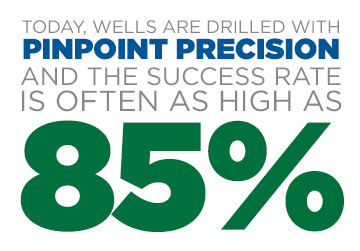
The energy geoscience industry takes this responsibility seriously and promotes the sound management of environmental and cultural resources. Surveyors plan each survey in great detail, taking into account existing conditions in the proposed survey area and any potential risks to flora and fauna. Identification of environmental, cultural, and community sensitive areas are important considerations in the process of planning for land seismic surveys. Environmental considerations are also made for public health and safety, water resources, cultural and paleontological resources, recreation, wildlife, vegetation and threatened, and endangered and sensitive species. Onshore seismic surveys are used in sensitive locations without damaging buildings or the environment.
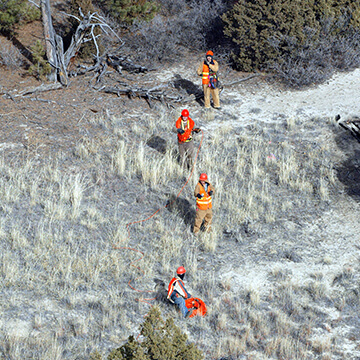
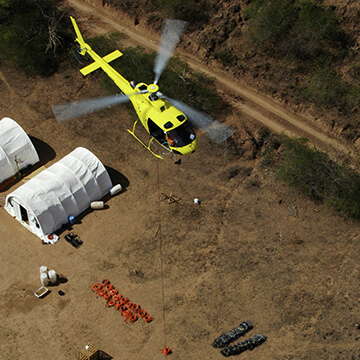
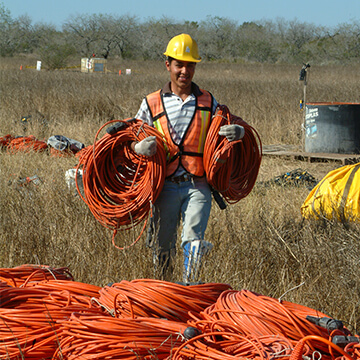
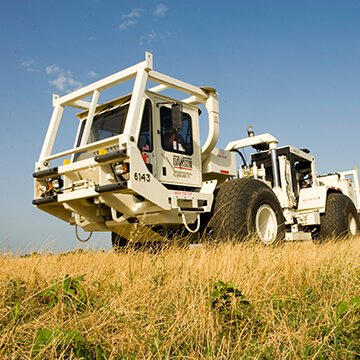
The energy geoscience industry takes this responsibility seriously and promotes the sound management of environmental and cultural resources. Surveyors take great detail in planning each survey, considering existing conditions in the proposed survey area and any potential risks to flora and fauna. Identification of environmental, cultural, and community sensitive areas are important considerations in the process of planning for land seismic surveys. Environmental considerations are also made for public health and safety, water resources, cultural and paleontological resources, recreation, wildlife, vegetation and threatened, endangered and sensitive species. Onshore seismic surveys are used in sensitive locations without damaging buildings or the environment.
The EnerGeo Alliance provides guidance materials and industry best practices for land operations.
Marine Environment
The world’s oceans and the marine species that live in them are essential to human life. These ecosystems are a source of food, medicines, employment, and livelihoods. With that in mind, it is most important that we all exercise care of this most important environment.
The energy geoscience industry respects the important role our oceans play in human life and is committed to conducting offshore activities in an environmentally responsible manner, including compliance with mitigation and monitoring guidelines and regulations.
Seismic surveyors have conducted their operations extensively around the world for decades, and scientific research indicates that the risk of direct physical injury to marine mammals is extremely low. In addition, there is no scientific evidence that demonstrates biologically significant negative impacts on marine life populations. Nevertheless, the members of the EnerGeo Alliance support and utilize mitigation measures that are proportionate to the potential risk and based on the best available science to minimize any potential impact of operations.
The EnerGeo Alliance provides best practices and guidance on mitigation measures for cetaceans, marine life visual observers, and use of towed Passive Acoustic Monitoring (PAM) for industry marine operations.
As part of its environmental stewardship leadership, the EnerGeo Alliance, along with the petroleum and natural gas industry, continue to invest in and provide technical support and oversight for independent scientific research to fill gaps in knowledge and eliminate uncertainty about possible effects of exploration and production (E&P) sound on marine life. This effort is made possible by the continuing support and participation of EnerGeo Alliance members.
